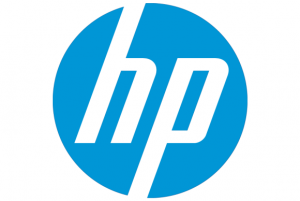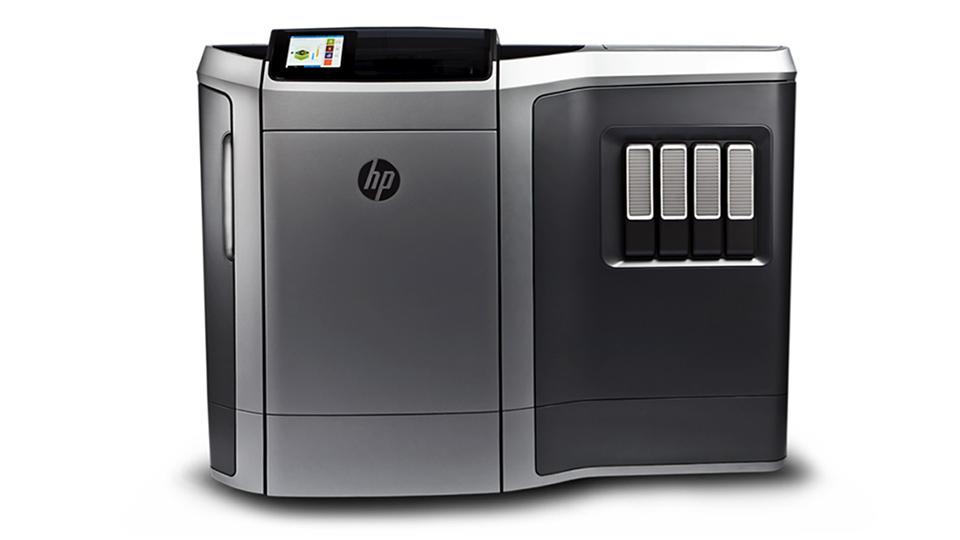Looking Ahead: Will HP Inc. Dominate 3D Printing in 2016? Or Will they Stumble Out of the Gate?
 In a year full of ups and downs, one of the biggest stories, and potentially the most disruptive, was the impending entry of HP Inc. into the 3D printing industry. You would think that a global tech company investing millions of dollars into an industry would be hailed as good news for everyone. Not only does it bring with it a new respectability and level of involvement from the more established corners of the tech industry, but it means that a global company believes that 3D printing technology has something potentially world changing, and profitable, to offer them. But this is Hewlett-Packard, and it would be a bit of an understatement to say that historically their judgement hasn’t exactly been the best, so it shouldn’t really surprising anyone that their 3D printing plans are being met with skepticism.
In a year full of ups and downs, one of the biggest stories, and potentially the most disruptive, was the impending entry of HP Inc. into the 3D printing industry. You would think that a global tech company investing millions of dollars into an industry would be hailed as good news for everyone. Not only does it bring with it a new respectability and level of involvement from the more established corners of the tech industry, but it means that a global company believes that 3D printing technology has something potentially world changing, and profitable, to offer them. But this is Hewlett-Packard, and it would be a bit of an understatement to say that historically their judgement hasn’t exactly been the best, so it shouldn’t really surprising anyone that their 3D printing plans are being met with skepticism.
It has been a while since HP managed to make a truly successful business decision. Their significant market presence has been maintained mostly through the momentum of brand recognition and it is pretty difficult to remember the last time any of their tech products has received more than a lukewarm reception. The fading glory of Hewlett-Packard is often laid at the feet of former CEO, and current former presidential candidate, Carly Fiorina but their problems began long before she came along. HP had been losing ground in the personal computer market for several years before she took the top spot, and in an era when the personal computer market was growing that was pretty hard to do. But Fiorina and her frankly disastrous merger with fellow stumbling computer giant Compaq is ultimately what damaged the brand, and it has never really come close to fully recovering since.
 After a brief upswing, albeit financed by controversial layoffs and drastic cost cutting measures, under Fiorino successor Mark Hurd was derailed due to a messy and contentious sexual harassment claim, HP had seemingly resigned itself to propping the company up on its printer and imaging business. The only side of HP that still managed to be profitable, even in the face of growing quality issues. It wasn’t until HP started to focus on building servers and storage solutions that things started to look up for them again. It was Former CEO Meg Whitman who ushered in a series of drastic measures meant to stop the company from spiraling into bankruptcy, first with another series of massive layoffs and then by announcing that she was going to split Hewlett-Packard into two separate companies, each focusing on one of the two areas that HP was managing to keep semi-successful.
After a brief upswing, albeit financed by controversial layoffs and drastic cost cutting measures, under Fiorino successor Mark Hurd was derailed due to a messy and contentious sexual harassment claim, HP had seemingly resigned itself to propping the company up on its printer and imaging business. The only side of HP that still managed to be profitable, even in the face of growing quality issues. It wasn’t until HP started to focus on building servers and storage solutions that things started to look up for them again. It was Former CEO Meg Whitman who ushered in a series of drastic measures meant to stop the company from spiraling into bankruptcy, first with another series of massive layoffs and then by announcing that she was going to split Hewlett-Packard into two separate companies, each focusing on one of the two areas that HP was managing to keep semi-successful.
Hewlett Packard Enterprise would focus on their servers, networking, consulting and software products and remain under the leadership of Whitman, while HP Inc. led by Dion Weisler would control the printer and computer side of the company. Weisler was already in charge of the 2D printer and computer divisions of HP, but he wasted no time in making sure that everyone knew that 3D printing was going to be a major focus for the new, slimmer company. First by creating a standalone 3D printing division, and then by appointing former senior VP of imaging and printing Steve Nigro to run it. Splitting Hewlett Packard into two companies wasn’t without its detractors, but in general it has been seen as one of the smarter moves the company has made in decades, and it is hard to argue with their new 3D printing strategy.
HP Inc. has not only introduced a new desktop PC called Sprout that integrates an entire 3D ecosystem into it, but they developed their new MultiJet Fusion 3D printer that they hope to make a fixture in the office. The full-color 3D printer will reportedly be the fastest high-quality commercial 3D printer on the market, and is priced considerably cheaper than their competitors. The MultiJet Fusion technology uses a thermal inkjet array and binding agents to produce what they say are more reliable and precise parts. But the technology is untested, and until the first units start to ship in 2016 there really isn’t much to go on in regards to quality other than their word. And for a tech company, HP hasn’t been very good at making great tech for a very long time.
What the new HP Inc. does have going for it, however, is a worldwide distribution and manufacturing network that has few competitors in the PC or 2D printer markets, much less in the significantly smaller 3D printing market. They also have invaluable name recognition, and a newly more narrowly focused business plan. They are wisely skipping the overcrowded hobby/maker market and focusing their 3D printing business entirely on serving businesses and industry. At this point, virtual commercial market dominance is theirs to lose, especially since their only significant competitors Stratasys and 3D Systems have been quietly melting down for the past year and a half. There are other commercial 3D printer manufacturers out there of course, but none of them can compete on a global scale the way HP Inc will be able to. If the MultiJet Fusion technology is good, then there will be little that can stop HP.
But I didn’t just write a brief history of Hewlett-Packard for my health, it’s because it is important to see who they are as a company and what they’re going to be bringing to the 3D printing industry. As a company, HP has been coasting on their brand name for almost twenty years, and it is going to take a little more than a solid but obvious business plan and some flashy new technology to change that. 2016 is going to be a very important year for HP Inc., either because they revolutionized full-color 3D printing, or because they failed spectacularly at revolutionizing full-color 3D printing. I have little doubt that in 2016 HP Inc. will make a lot of waves in the 3D printing industry, but if their technology isn’t up to snuff then those waves are going to be caused by a bellyflop.
Subscribe to Our Email Newsletter
Stay up-to-date on all the latest news from the 3D printing industry and receive information and offers from third party vendors.
Print Services
Upload your 3D Models and get them printed quickly and efficiently.
You May Also Like
AMT Shakes Up 3D Printing Market with Affordable, High-Performance Post-Processing Consumables
Additive Manufacturing Technologies (AMT), a global leader in automated 3D printing post-processing, is launching a new line of consumables that promises to significantly reduce operational costs for additive manufacturing users....
The Bambu Lab 3D Printing Platform… or Trapdoor?
Bambu Lab began as a completely closed 3D printing system, where the printer, software, and materials all functioned well but were exclusively from the company itself. This approach mirrored Formlabs,...
2025 Renault 5 E-Tech Electric Is Latest Car with 3D Printed Accessories
Due to the required numbers, additive manufacturing (AM) has struggled to make significant inroads into vehicle interiors in meaningful numbers—at least as far as public knowledge is concerned. Typically an...
BMW Completes Project to Automate Plastic 3D Printing
After a three-year journey to efficiently scale polymer 3D printed part production, the POLYLINE project has concluded. This endeavor, headquartered at BMW’s Additive Manufacturing Campus, pooled the expertise of EOS,...






























